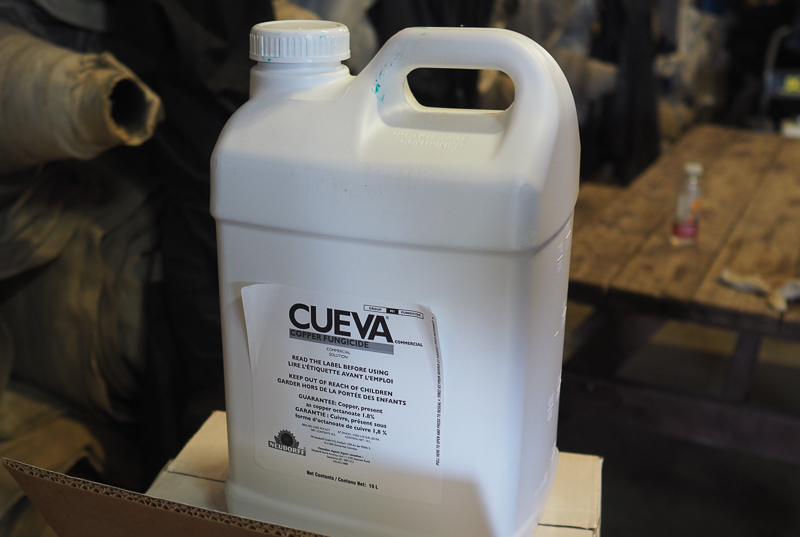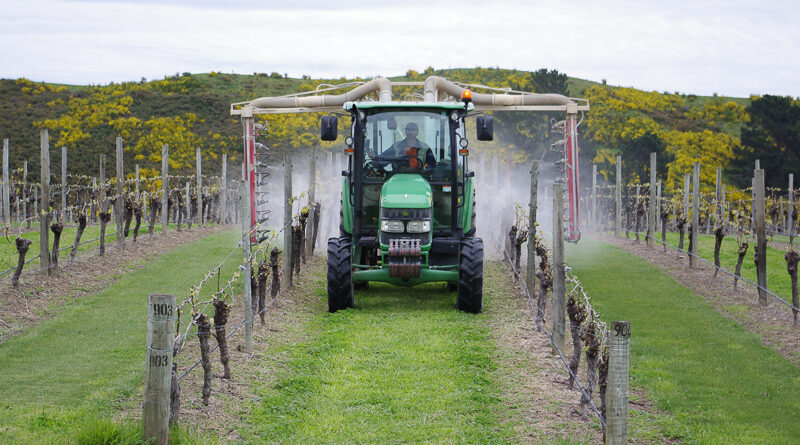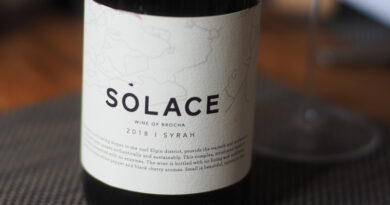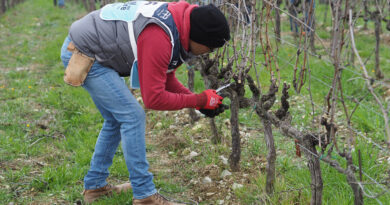Are pesticide levels in wine something we should be concerned about?
Advocacy group Pesticide Action Network UK (PAN UK) do some good work. We need independent bodies that campaign for food safety. There’s a lot of trust involved in our consumption of food: we trust that any food or drink we buy in a supermarket is safe to eat. But a news piece based on a recent press release of theirs goes too far. PAN UK took government sampling data on 72 commercially available wines in the UK, which found traces of pesticides. This was propagated by a rather scaremongering piece in the Daily Mail that listed the names of wines that contained these residues with the clear implication that these wines would represent a danger to human health if consumed. This is an incredibly unfair thing to do if indeed those wines are perfectly healthy. So let’s take a more intelligent look at what’s going on here.
This is not the first time we’ve had these sorts of accusations about pesticides in wine. We need to pause here and consider the term ‘pesticide’. It’s a scary sounding word, but remember that it’s another term for crop protection products, and without the use of crop protection products we wouldn’t have wine – even organic or biodynamic wine makes use of ‘pesticides’. There are strict limits concerning their use, and if they are used, then trace levels may well find their way into wine. But these trace levels must be well below levels that could cause any human health issues. It’s easy to scare-monger when the term pesticide is banded around. As my readers know from my books on Regenerative Viticulture and The New Viticulture, I’m hugely committed to truly sustainable farming, building up soil health, and seeing the vineyard as an agroecosystem. But I’m also a scientist, and I can’t sit by and not comment when people use superstition, scaremongering and a failure to grasp scientific principles to beat up winegrowers who are doing nothing wrong. Let’s remember: plants are chemical factories, making a wide range of chemicals, many of which are toxic or carcinogenic, which is why we only eat some plants and leave others well alone. Fungi produce all sorts of toxins, which is why we avoid mouldy food. There’s a lot of jumbled thinking here, even by smart people. I don’t have access to the latest data points referenced in the study, so I can’t comment specifically, but this is an issue I wrote about 15 years ago and the principles still stand.

A similar study from 2008 (here) by PAN Europe, titled Message in a bottle, reported the results of tests on 40 bottles of wine purchased within the European Union. ‘European wines systematically contaminated with pesticide residues’, was the conclusion. The report comments: ‘Together the 34 bottles of conventional wine contained 148 pesticide residues. All 34 bottles contained at least one pesticide, while the mean number of pesticides per bottle was more than four. The highest number of residues found in a single bottle was 10.’ Does this mean wine drinkers are in danger, and that there is a systematic failure by regulatory bodies to do the appropriate monitoring?
Anxious to get to the bottom of all this, I did a bit of research on the pesticides involved and the concentrations that were found in the wine. My initial conclusion? The report seems to be a bit of scaremongering. The actual results were published on the PAN website, and the levels of the various pesticides encountered are given in micrograms per litre. Now this is in the range of parts per billion (1 μg/kg = part per billion, and a litre of wine weighs approximately 1 kg), which is incredibly low. It’s all about the concentration. And if we look at what the pesticides are, they turn out to be fairly benign chemicals that will only have any adverse effects on health at extremely high levels.
Toxicity testing of agrochemicals involves looking at their effects at high concentrations, assuming that those who will work with them risk exposure to them in undiluted form. There are strict regulations concerning their use, and also concerning residue levels that are permitted in food. The regulations err on the side of safety. From the information widely available on the internet, it seems that the residue levels present in wine are not going to have any negative health effects.
However, I can understand why the results cause concern. If a chemical has the potential to be carcinogenic, should we be using it at all on wine grapes? Wouldn’t it be safer not to use any pesticides at all if there is a risk that they might end up in wine? While this position sounds a sensible one, it ignores the fact that many substances are harmless at normal levels of exposure, but with repeated exposure at high concentrations they can be carcinogenic, or toxic in other ways. Let’s give an example. It could be that the active ingredient in sunscreen (and I’m making this up), when used at 100 times the concentration found in commercial preparations, can cause cancer when rubbed on the ears of laboratory rats every day for a year. Does this mean that sunscreen is carcinogenic? No. There is such a dose that has no observable adverse effects, and to avoid using sunscreen because of worries about health could end up putting you in much worse danger. It is entirely possible that for many compounds there is a threshold effect for carcinogenesis: at a certain level a harmless substance crosses this threshold and then becomes harmful.
It is illogical to reject extremely useful, safe fungicides just because if you were to drink the stuff neat it would harm you. If you have an ideological objection to systemic fungicides on the grounds that they are ‘artificial’, and prefer to use sulphur and copper because you see them as natural, that is your right. But you can’t claim that systemic fungicides are going to harm people if studies have shown they are only harmful at much higher levels than are used in practice.
In no way do I wish to be labelled as an apologist for the agrochemical industry, and I deplore the over-reliance of chemical ‘solutions’ in farming. I’m a big supporter of integrated pest management/agriculture raisonée/integrated farming approaches, and I’m sympathetic to organics and biodynamics. But I think a press release like this has the potential to mislead people, first by suggesting that all synthetic fungicides are dangerous (they aren’t – they’re a relatively safe group of agrochemicals) and secondly by suggesting that wine is riddled with dangerous levels of residues (which from these results it doesn’t seem to be). In an ideal world wine would have no residues at all. But residue levels well under what is considered, rather conservatively, to have the potential to harm are not concerning.
Below I have compiled some brief notes and further reading on the major agrochemicals mentioned in the PAN report. The LD50 values quoted are the levels of these chemicals which cause half of the animals tested to die. MRL refers to maximum residue limit. These figures are all in mg/kg (this is the same as parts per million, ppm). Bear in mind that the average person weighs 70 kg, and that 1 mg = 1000 μg (the unit quoted in the PAN report).
Dimethomorph
A morpholine fungicide that acts systemically, this is a cinnamic acid derivative that is only slightly toxic to mammals. Inhibits the formation of fungal cell walls: mammals don’t have these.
LD50 mouse = 3900 mg/kg; rat = 5000 mg/kg
Reported as not likely to be a human carcinogen
- http://pmep.cce.cornell.edu/profiles/extoxnet/dienochlor-glyphosate/dimethomorph-ext.html
- http://www.epa.gov/opprd001/factsheets/dimethomorph.pdf
Pyrimethanil
An anilinopyrimidine fungicide
LD50 rat = 4150 mg/kg
Not acutely toxic (EPA)
European MRL = 3mg/kg on winegrapes; USA MRL = 5mg/kg
ADI (acceptable daily intake) = 0.17 mg/kg bodyweight
Carmendazim
A systemic benzimidazole fungicide that has low toxicity and is rapidly excreted. Inhibits beta tubulin synthesis (microtubules), but fortunately doesn’t work on mammals.
LD50 in rats and mice is over 15000 mg/kg
Acceptable daily intake of 0-0.03 mg/kg b.w. was set by the JMPR in 1995
Bad for earthworms
Cyprodinil
An anilinopyrimidine fungicide
Acceptable daily intake = 0.03 mg/kg bodyweight per day (EU)
MRL in grapes = 5 ppm (JFCRF); residue tolerance (EPA) = 2 ppm
Residues unlikely to represent a public health concern (JMPR)
- http://www.epa.gov/opprd001/factsheets/cyprodinil.pdf
- http://ec.europa.eu/food/plant/protection/evaluation/existactive/list_cyprodinil.pdf
- http://www.fao.org/ag/AGP/AGPP/Pesticid/JMPR/Download/2003_eva/Cyprodinil%202003.pdf
Azoxystrobin
systemic, broad-spectrum fungicide methoxyacrylate compound used as a preventive and curative systemic fungicide
LD50 >5000 mg/kg for rats
Unlikely to be a carcinogen
MRL in grapes = 10 ppm (JFCRF)
Degraded rapidly under agricultural field conditions with a soil half-life of less than 2 weeks; sensitive to photolysis
- http://pmep.cce.cornell.edu/profiles/extoxnet/24d-captan/azoxystrobin-ext.html
- http://www.epa.gov/opprd001/factsheets/azoxystr.pdf
Procymidone
A dicarboximide fungicide
LD50 mice and rats >5000 mg/kg
- http://www.fao.org/ag/AGP/AGPP/Pesticid/JMPR/Download/93_eva/procymid.pdf
- http://www.fao.org/ag/agp/agpp/Pesticid/Specs/docs/Pdf/new/procymid.pdf
Iprodione
Dicarboximide fungicide
MRL = 25 ppb (JFCRF)
LD50 rat >4400 mg/kg (EPA)
LD50 rat > 2000 mg/kg bw (EU)
Rapidly eliminated from the body and breaks down quickly in the soil
- http://www.agf.gov.bc.ca/pesticides/infosheets/iprodione.pdf
- http://www.epa.gov/iris/subst/0291.htm
- http://ec.europa.eu/food/plant/protection/evaluation/existactive/list1-42_en.pdf
See also:
UK Pesticide Residues Committee
http://www.pesticides.gov.uk/prc.asp?id=824
Table of MRLs in food from the Japan Food Chemical Residues Foundation:
For grapes http://www.m5.ws001.squarestart.ne.jp/foundation/fooddtl.php?f_inq=10800




